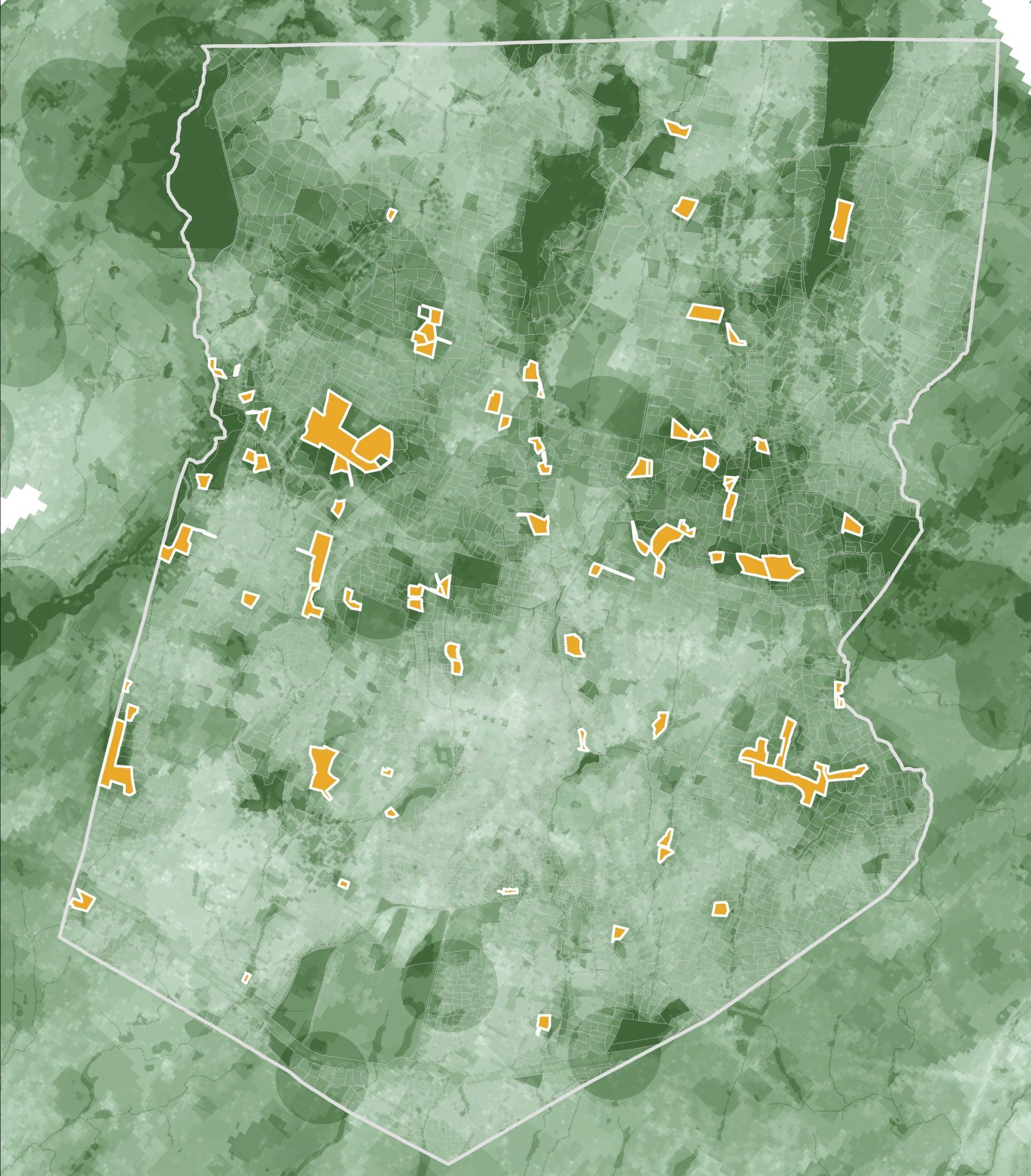Protecting New Canaan’s Special Places
The New Canaan Land Trust was initially founded as a way to accelerate the rate of land and water conservation in New Canaan. Over its first 50 years, the Land Trust protected nearly 400 acres. While much has changed since the organization was first established, conservation is still at the heart of what we do, and we continue to seek opportunities to conserve special places in our community.
Recognizing the need to be proactive in its efforts, the Land Trust developed a 20-year Strategic Conservation Plan in 2020. The Plan establishes the goal of conserving an additional 400 acres of land by 2040, effectively doubling the rate of land conservation in New Canaan. The Plan also identifies strategic conservation opportunities using sophisticated modeling software that compiles multiple geospatial datasets.
Conservation is critically important to our community (check out some of the reasons below), and with your support, the New Canaan Land Trust will continue protecting New Canaan’s special places. Click HERE to learn more about how the Land Trust can help conserve your property, or consider donating to support this important work.

Multiple datasets, including ground water quality, climate resilience, intact forest area, and proximity to existing open space, were used to identify areas of high conservation priority within New Canaan, shown in dark green. Orange parcels are existing Land Trust conservation areas.
Why Protect Open Space?

Open Space Protects Habitats
According to the Natural Areas Diversity Database, New Canaan is home to “Significant Natural Communities”, which represent a wide array of habitat types including woodlands, shrublands, meadows, rivers, ponds, and wetlands. Native species, including birds, bees, and amphibians, rely on these habitats. Once land is transferred to the New Canaan Land Trust, it is permanently protected and will remain in its wild and natural state in perpetuity. NCLT also works to connect fragment habitats, an important step in sustaining and often increasing biodiversity.

Open Space Improves Community Well-Being
Well-Being Research links access to open space with increased physical activity and exercise, better mental health and well-being, increased social interactions, and reduced stress. In fact, a 2001 report by the Environmental Health Research Foundation found “…access to green space is an important predictor of a higher level of physical activity, reduced risk of obesity, and longer life…” and that “…heath disparities between high income and low income people are much narrower in areas with ample green space…”.

Open Space Protects Drinking Water
Did you know that more than half of New Canaan residents get their drinking water form backyard wells? That means having quality groundwater is essential to the majority of the town. Fortunately, protecting open space increases water quality by allowing rainwater and runoff to naturally filter through soil, and can also help to reduce sedimentation in rivers. Open space can also increase the quantity of groundwater and reduce the chances of flooding by allowing for better infiltration of water into aquifers.
Open Space Protects Air Quality
Connecticut has an average of 20 “Bad Air Days” per year, meaning that there are high concentrations of ground level ozone, sulfur dioxide, particulates, lead, carbon monoxide and nitrogen oxide. These Bad Air Days represent a national health cost of between $14 and $55 billion annually. Fortunately, trees and open space can help to remove air pollution: in Washington, DC., the city’s 29 percent tree canopy was estimated to remove 540 tons of air pollution, a service was valued at $2.5 million.

Open Space Saves New Canaan’s Tax Dollars
Close to 100 studies from across the country have shown that new residential development costs more in community services than it brings in through taxes. Studies done in Connecticut have show that for every $1 that a new development bring in through taxes, towns end up paying between $1.05 and $1.33 for community services such as public schools, emergency services, utilities, roads, and more. By simply leaving land as open space, towns can actually reduce their expenses. Other studies, including this analysis of over 1400 municipalities in New England, have disproven the common misconception that conservation raises property taxes. The study concludes that a 1% increase in conserved open space would cause residents or a given municipality to experience an annual tax bill increase of just $0.72 per $100,000 of taxable property value. Further, this minor increase did not persist beyond three years.

Open Space Increases Property Values
Living next to a New Canaan Land Trust preserve is likely causing an increase in your property value. At least a dozen studies show a positive relationship between land values and proximity to open space, with a 2006 report by the State of Connecticut stating that “…homebuyers are generally willing to pay more for property located close to parks and open space”, that “…77.7% of home buyers and shoppers rated natural open space as either ‘essential’ or ‘very important’” and that “…a 20% increase in value for property adjoining or fronting a passive-use park is a reasonable starting point…”.

Open Space Boosts the Economy
Outdoor recreation is a growing industry. A recent study found that each year, outdoor recreation generates $9 billion in consumer spending, $2.9 billion in wages and salaries, $734 million in state and local tax revenue, and sustains 69,000 direct jobs (more than CT’s aerospace and defense industries, combined!). And yes, all of those figures are for the state of Connecticut alone! By creating opportunities for hiking, bird watching, nature photography, and more, the New Canaan Land Trust is fueling the outdoor recreation industry.

Open Space Mitigates the Impacts of Climate Change
In the battle against our changing climate, open space provides a number of important services. Not only do trees sequester atmospheric carbon, but the undisturbed soils also serve as an important carbon sink. Open space also helps to reduce the severity of flooding events, which scientists predict will become more common, and provides important corridors for wildlife that are being displaced from their native ranges.

Open Space Maintains New Canaan’s Scenic Beauty
There are many reasons that people choose to move the New Canaan, but one of the major ones is the scenic beauty and rural character of the town. When driving through the woods along winding country roads, its hard to believe that New Canaan is only a short drive from one of the world’s largest cities. Continued development and sprawl threatens to eliminate New Canaan’s scenic beauty, but the New Canaan Land Trust and its nearly 400 acres of protected land are helping to combat this change.

New Canaan is Below the State Conservation Goal
The State of Connecticut laid out its Green Plan with a goal of protecting 21% open space by 2023. Half of that land (10%) is to be protected by the state, and the other half (11%) is to be protected by towns, land trusts, and water companies. By continuing to acquire new land, and by placing better protection on parks and other town-owned land, New Canaan may be able to achieve the 11% goal.